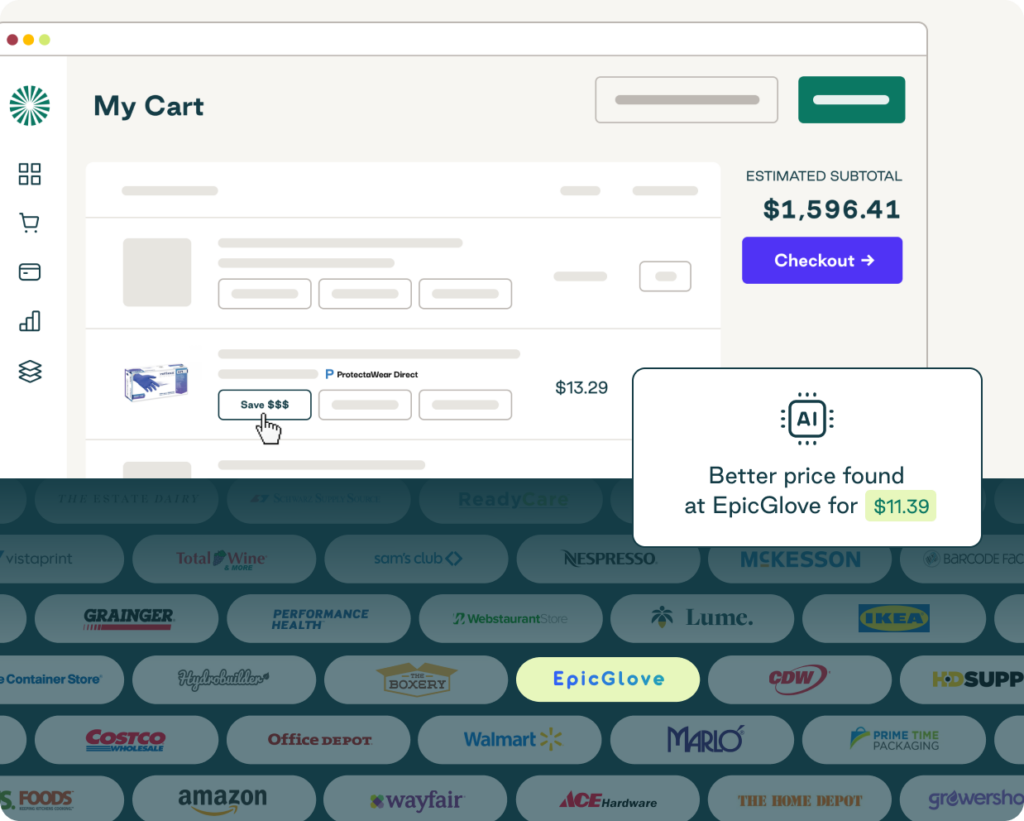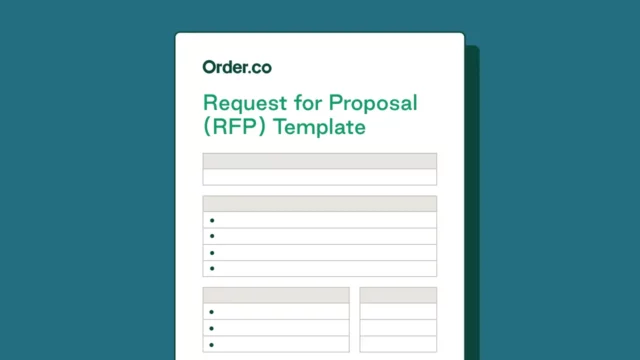RFI Meaning: Plus How It Compares to an RFP, RFQ, and RFT

RFI Meaning: Plus How It Compares to an RFP, RFQ, and RFT
You've checked out several suppliers, and they seem like good options for your product needs. But after your initial reviews, you still have questions about their product lines, compliance practices, delivery timelines, and potential for long-term partnerships. Before you ask for formal proposals or quotes, you may need to gather additional information.
An RFI, or a request for information, helps you do just that. It's a simple way to clarify what each supplier offers so you can make a faster and more informed decision about which vendor to select. Knowing how to create a concise yet comprehensive RFI can not only save you time, it can help ensure you meet compliance and brand reputation standards. By understanding what to include in an RFI and when to use one, you'll be better equipped to choose the right vendor for your business needs.
Download the Free Tool: Request for Proposal (RFP) Template
RFI meaning: What are requests for information, and why are they valuable?
A request for information is a general request made to a potential supplier to learn more about that company's offerings. It’s a preliminary form used to request information about products or services that can help your company achieve its goals.
RFIs aren't for requesting specific pricing or service tier information—they're meant to help you determine whether providers meet your initial evaluation criteria. Sending an RFI is an early step in the purchasing process that allows you to narrow down your vendor choices.
RFIs are valuable for:
- Regulatory compliance assurance: Gathering details regarding compliance credentials and standards (like ISO certifications, SOC 2 reports, and other industry-specific frameworks) helps ensure potential vendors meet necessary regulations.
- Risk management and mitigation: Sending RFIs to conduct vendor risk assessments helps you gather information on financial, operational, and cybersecurity details that could otherwise put your organization at risk.
- Audit readiness and documentation: Establishing an audit trail through RFIs supports due diligence and provides clear documentation regarding decision-making rationale and partnership expectations.
- Competitive market analyses: Mapping your vendor choices and defining advantages—such as who uses emerging technology, follows industry best practices, and accommodates competitive pricing trends—helps you make more informed purchasing decisions.
Along with these practical benefits, the RFI process helps you identify vendor limitations and saves you time by allowing you to focus your efforts on the most qualified potential partners.
How to write a request for information
A good RFI should include questions and guidelines that help suppliers provide basic yet relevant information. The responses will give you enough detail to shortlist potential suppliers and proceed with vendor selection as part of an intelligent procurement process.
The standard format of an RFI template makes it easy for suppliers to complete and users to evaluate. While this request is merely a simple solicitation for additional company information, providing the right amount of detail with a good dose of flexibility ensures you get helpful responses for use in your procurement process.
In general, your RFI should include the following:
- An overview of the project: Outline the general terms of the project and the outcomes you’re trying to achieve. You may also want to include introductory information about your organization.
- The time frame for performance: Let suppliers know the expected timeline for the project or purchase and how long they have to reply to your RFI.
- Specific project details: Share any parameters or requirements you have for the product or service to help suppliers understand the scope so they can provide more accurate responses.
- Guidance for interested suppliers: Explain how suppliers should submit information if they want to participate.
- Room for additional information: Leave space for suppliers to add additional relevant details or insights, especially if they regularly offer solutions for the problem you’re addressing.
Example RFI: Spa company
To get a better idea of how to create an RFI, review this example of a spa that's looking for a vendor to supply products.
Purpose
The purpose of this RFI is to collect market information about spa supplies for 10 wellness company locations. The goal is to consolidate orders to a single supplier for spa goods and consumer products.
Time frame
Orders will occur monthly, with the first orders for all locations taking place within 60 days of the completed contract. RFI responses should be submitted within 30 days of receiving this notice.
Specifics
Provide general information on available spa products and consumables, including linens, treatment products, tables and equipment, and tools like salt stones, bolsters, and related items.
Preference will be given to sustainable suppliers that offer organic, fair trade, and ethically sourced products.
Guidance for responses
Suppliers interested in responding to this RFI should email their responses to the address provided or submit them via the online portal. Late responses will not be considered. For questions, contact us at the email address provided and include “Spa Supplies RFI” in the subject line.
Other information
Suppliers are encouraged to provide additional details about product lines, logistics capabilities (if available), and any other relevant information that supports inclusion on the supplier shortlist.
This example illustrates how to outline your expectations and give suppliers the information they need to respond effectively.
Mistakes to avoid when creating an RFI
Even with an organized and efficient RFI process, you may still face supplier information gaps that lead to a poor vendor fit. To build an effective RFI and choose the ideal supplier for your needs, avoid the following mistakes.
Stating unclear requirements
It may be tempting to send quick RFIs with broad descriptions of your needs and expectations. But doing so often creates more work for you and your potential partners while increasing your chances of receiving irrelevant responses.
Be specific about the information you need. Clearly outline your requirements and provide direction on how suppliers should respond to ensure you receive useful, targeted answers. These details help you evaluate fit more effectively during your vendor management risk process for all your supplier relationships.
Overwhelming vendors with details
Being clear about your expectations doesn’t mean overwhelming suppliers with an information dump. Too much detail can make your RFI overly complex, which leads to confusion, errors, and miscommunication. You'll likely end up with a wide range of responses that don’t help your procurement decisions.
Think of your RFI as a first point of contact. When you meet someone for the first time, you focus on the essentials—their interests and what they do. The same goes for your RFI. Instead of worrying about overly specific details, ask for core information that helps narrow down your vendor list. Non-negotiables, such as compliance standards, environmental expectations, and general operational needs, are great starting points.
Requesting pricing or solutions too early
While you may choose to include broad budget estimates or ranges for informational purposes, the RFI stage isn't for getting detailed pricing information. For one, you don’t want to start negotiating while you're still evaluating other vendors. Also, you risk eliminating potential partnerships by discussing pricing and solutions prematurely. The purpose of an RFI is to save time by qualifying a shortlist of vendors so you can avoid investing your resources in the wrong suppliers.
Pro tip: Use a procurement platform like Order.co for strategic sourcing. Its AI sourcing can help you find the best prices in the Order.co vendor network (which leads to an average of 5% savings).

Skipping a standardized format
To take full advantage of the RFI process, responses should be consistent and easy to review. Creating a template with structured questions helps standardize responses, allowing you to compare vendors quickly without spending extra time sorting through different formats for the same information.
Expecting timely submissions without clear instructions
Your RFI should clearly communicate how and when to respond. Otherwise, you won’t get the replies you need for an informed decision. Be sure to include a response deadline, contact information, and the expected submission method. The easier you make the process, the more likely you are to receive on-time responses.
Casting a wide net without pre-screening
RFIs are a great way to explore your options. But sending them to irrelevant or unqualified suppliers can lead to overwhelming and unhelpful responses. Instead, identify and target a focused list of vendors that meet your initial criteria.
One way to narrow down your initial list is by using a vendor risk matrix. This tool helps assess risk factors like business continuity, reputation, and data security so you can prioritize the most reliable partners.

RFI vs. RFP, RFQ, and RFT: When to use which
While it’s common to see the terms RFI, RFP, and RFQ used interchangeably, they are not the same thing. Understanding what the various request types are for and when to use them helps maximize their value.
Request for proposal (RFP)
A request for proposal is a formal document that asks suppliers to outline potential solutions for a business need. Sending an RFP is usually the second step after you've reviewed RFI responses.
RFPs are more in-depth than RFIs and help you gather detailed information from prequalified suppliers. While RFIs help filter your vendor pool, RFPs help you evaluate how those vendors would approach your specific challenge. They also open the door for collaboration by allowing suppliers to suggest solutions within their service offerings that might solve your business challenge.
- What it is: A request for suppliers to present a proposed solution for your business needs
- When to use it: After the initial RFI process, when you're ready to explore detailed solutions and want to allow the vendor to propose flexible options
- What it includes: Your requirements, project scope, evaluation criteria, preferred solutions, pricing expectations, and timeline
- Why it matters: RFPs help narrow your vendor list further and give suppliers the chance to contribute ideas and innovations
Request for quote (RFQ)
A request for quotation is even more detailed than an RFP and serves to gather additional details, in-depth specifications, and accurate cost estimates.
RFQs are particularly effective when buyers know which solution will work within their current framework or infrastructure. These documents don't ask for creative input or possible solutions—they focus strictly on pricing, quantities, and deliverables.
By the time you issue an RFQ, you typically have a concrete idea of your needs and only want suppliers to respond if they can meet those specifications. RFQs outline every parameter up front to support competitive bidding and final decision-making.
- What it is: A formal request that lists detailed specifications and asks suppliers to quote costs
- When to use it: After completing your vendor research with an RFI (and possibly an RFP) to get precise cost estimates from shortlisted partners
- What it includes: Specific requirements such as delivery expectations, quantities, product models, terms and conditions, and pricing
- Why it matters: RFQs help you confirm prices and requirements so you can choose your vendor based on your budget and procurement goals
Request for tender (RFT)
A request for tender is a separate but related tool for finding suppliers. It's an open request that asks vendors to provide an offer for services or products in the form of a sealed bid.
RFTs are often used for large projects to create a competitive bidding environment that helps you select the best vendor and detail. This method is common in government sectors, such as when engineering firms submit bids to compete for contracts.
- What it is: An open request asking suppliers to submit offers via sealed bids
- When to use it: As an alternative to an RFI to spark competitive bidding and expand vendor options
- What it includes: Terms and conditions, evaluation criteria, bidding requirements, and transparent expectations
- Why it matters: RFTs ensure a fair and competitive process, making them especially effective for large-scale procurement projects
RFIs are more general than RFPs, RFQs, and RFTs. They help you identify qualified suppliers, understand their general capabilities, and compare their offerings. RFIs are particularly useful when you're still exploring multiple potential solutions or your understanding of the challenge is still in the early stages.
Improve your sourcing practice with Order.co
RFIs, RFTs, RFQs, and RFPs are essential steps in the procurement process, but managing them all—along with vendor relationships, timelines, product costs, and documentation—can quickly become overwhelming. And trying to do it across disconnected tools and with manual workflows can lead to delays, missed opportunities, and poor visibility into purchasing decisions.
Order.co is all-in-one procurement software that brings every part of the procurement process into a single platform. By centralizing real-time tracking, vendor management, and strategic sourcing, the solution makes choosing the right suppliers and making smarter purchasing decisions faster and easier.
With Order.co, you get:
- Unified purchasing: Automate PO generation, order tracking, vendor management, and strategic sourcing.
- Cost-effective sourcing: Add more savings to your bottom line by automatically sourcing products that meet your budget and needs. Plus, you can compare across vendors and organize all your purchases in one cart.
- Real-time data: Analyze up-to-date procurement data and track every action to improve financial performance through better visibility.
Schedule a demo today to see how Order.co can help you find the right vendors, reduce costs, and take control of your entire procurement process.
Get started
Schedule a demo to see how Order.co can simplify buying for your business.
"*" indicates required fields



